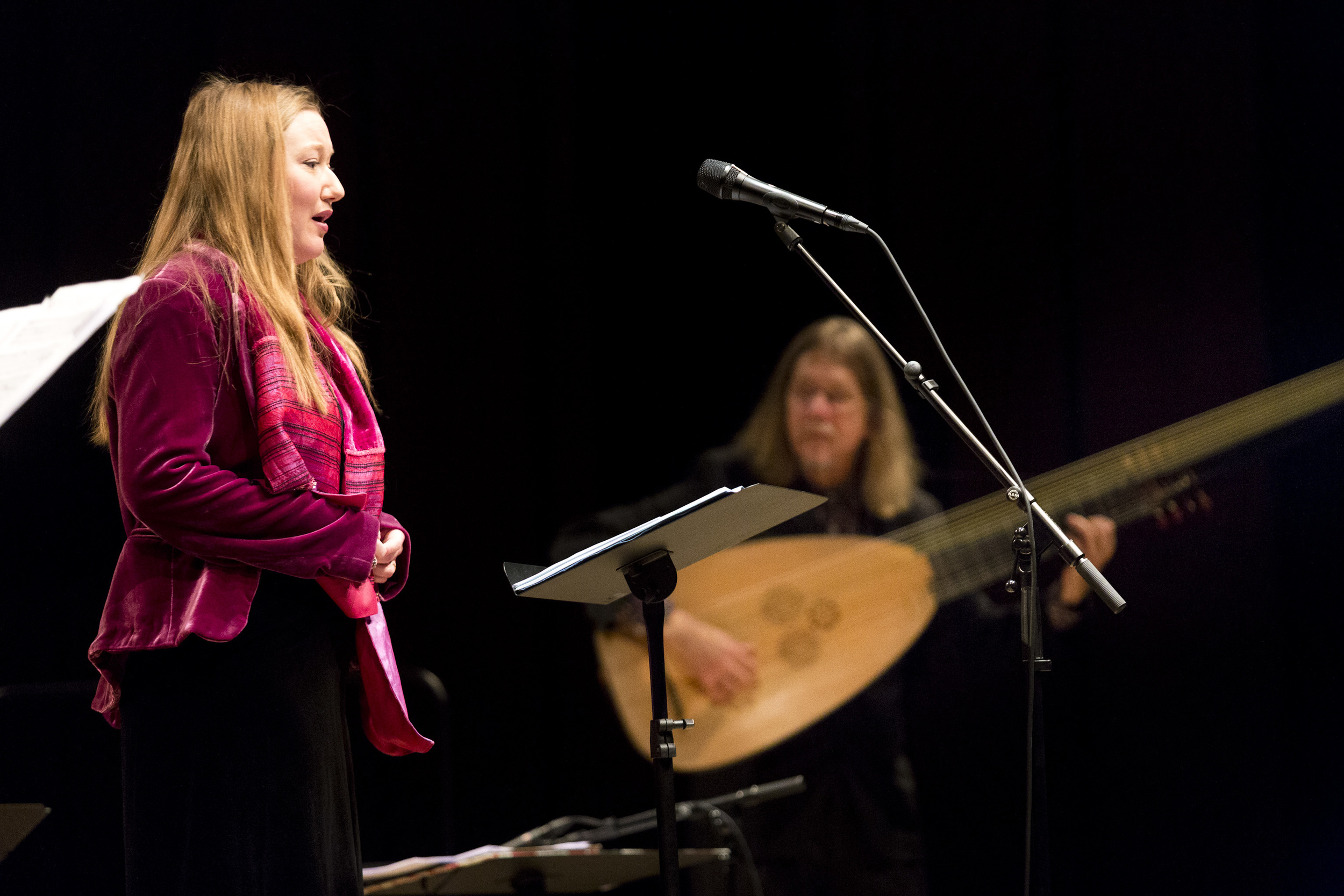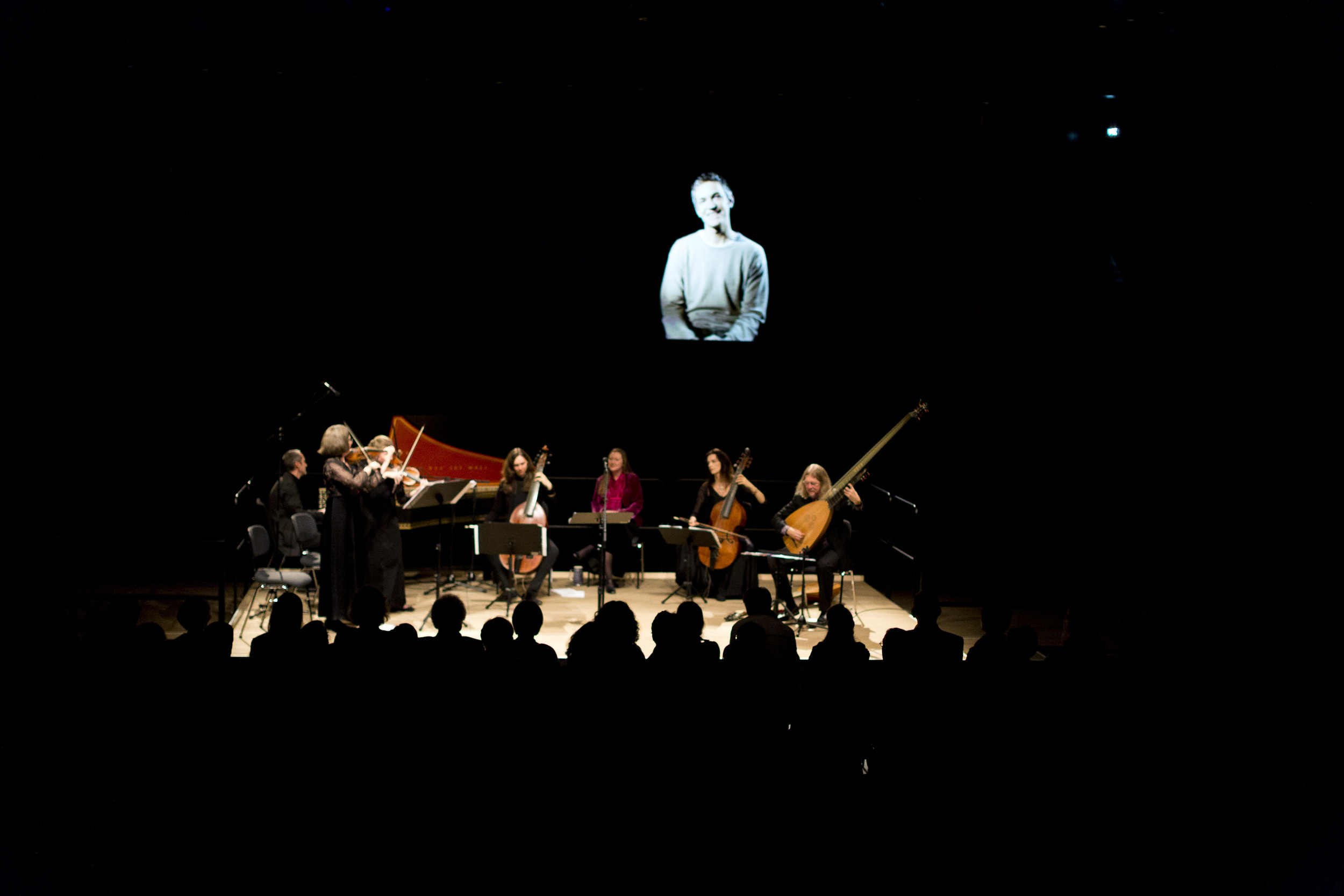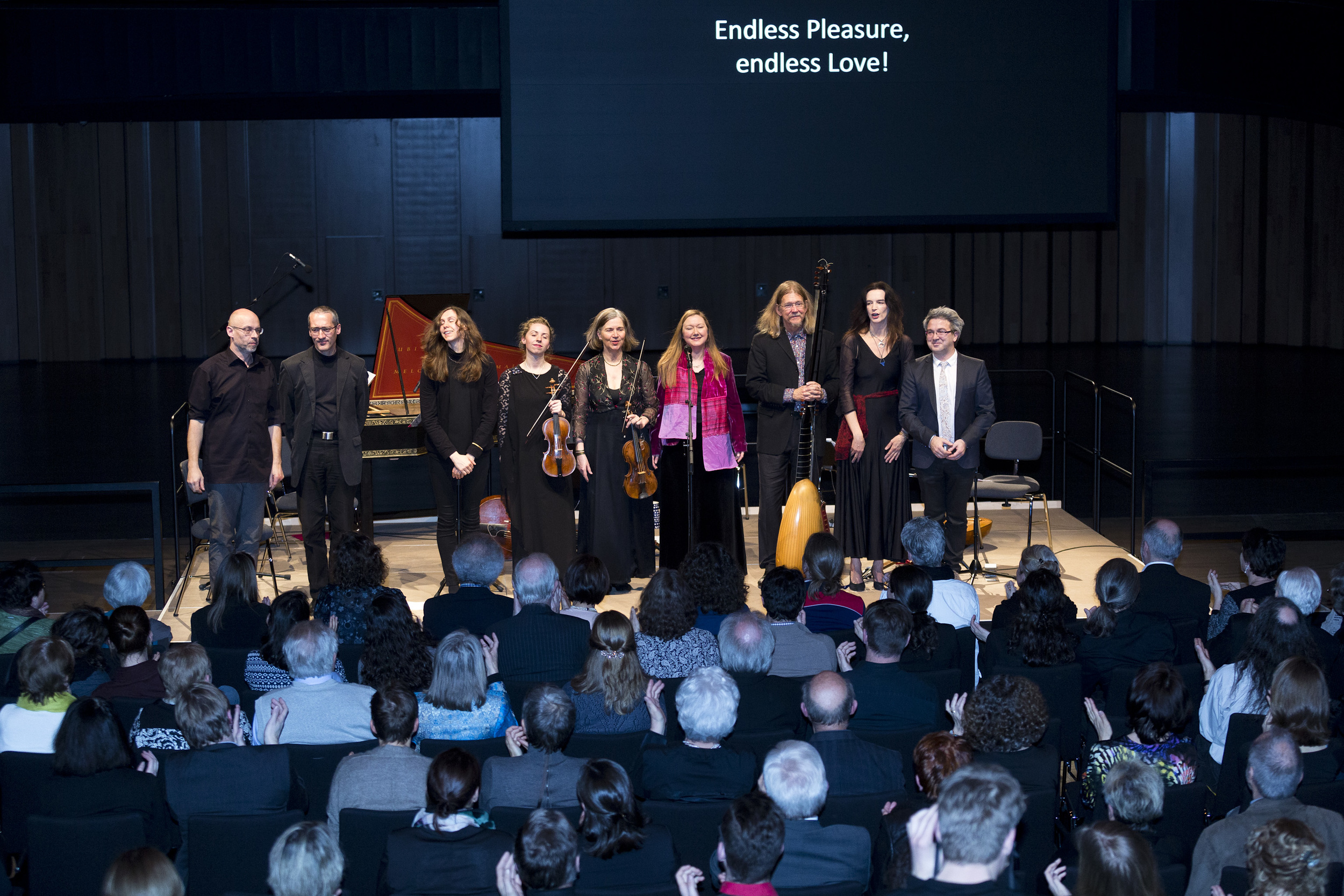Artists: Paolo Pandolfo (viola da gamba), Lee Santana (lute, guitar), Nehad El-Sayed (oud), Omar Ghayatt (performance artist) and voice (Luciana Mancini)
(Excerpts from the review:)
“‘My religion is of love’: these five words are the quintessence of an incredibly complex and yet thrilling concert evening at the St. Cyriak Church in Sulzburg. The Orient meets the Occident; Arabic music meets European music – that is the theme of this unusual concert series of the first Oriental Summer Academy. With the experimental crossover project Los Braços Traygo Cansados – Al Oud meets Laud, Matthias Wagner, the artistic director of the series, has opened a new chapter that is extremely challenging for the listeners. […] Anyone who accepted the adventure experienced an evening filled with vivid images that delved far into the depths of human experience and dug up solace as well as disquiet. And a great deal of beautiful music.”
“The path that this music follows is of an old Spanish romance about a fallen knight. His father is send to the battlefield to look for the body. In the end, a Moor shows him the way. We are on the Iberian Peninsula at the time of the Moors, at the time of recapture by the Christian kings of the West. It is the eve of an era of mutual tolerance and respect, a time where the two cultures of active exchange between the two cultures. The Renaissance composer Enriquez de Valderrábano composed music to several of the strophes. These are the fine sounds that the viola da gamba and lute celebrate together before the oud is included into the story.”
“The vast ornamentation of Arabic music sounds like sparkling jewelry and once again the three instrumentalists go on with what seems to be an improvisatory journey into the present with virtuoso musical effects. […] And even if one is, upon first listening and viewing, unable to comprehend all aspects and technical elements of this complex and cleverly developed performance, the impression that it leaves is lasting. The authenticity of the music and content found its way into the souls of the people.”







